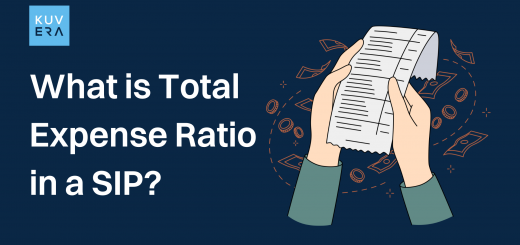#AskUsAnything is our series where we answer questions about investing and personal finance. Probably they popped up in your head too, but you didn’t know whom to ask. In this part, learn how to plan an education fund for your daughter and how to choose a health cover for your parents.
———-
I am a Commercial artist. I have 5 yo twin daughters. I’m planning to create education funds for my daughters, but I don’t prefer equity investments. What is better PPF or Sukanya Samriddhi Yojana? Is it possible to create accounts for both daughters?
-Suyash Kadu, Nashik
Yes, you can open two separate accounts for your girls. The Sukanya Samridhhi Yojana and PPF schemes are quite similar except for a few withdrawal rules and a nominal difference in interest.
Sukanya Samriddhi Account provides an interest rate of 7.6% pa whereas PPF provides 7.1% interest. However, SSY’s ojective is the welfare of a girl child so only parents of girl child are eligible for it.
Both PPF & SSY are fixed-income deposits backed by the government and are among the safest investment options. Both provide substantial and guaranteed returns along with tax benefits. Both can be opened at your nearest bank or post office. Let’s look at the specifics for further comparison:
Interest rates
The interest rates are revised and declared quarterly for both schemes. For example, SSY used to offer 9.10% in April 2014 which has now come to 7.6% in Q1 of FY 22-23. The same goes for PPF, the scheme used to offer 12% interest at some point, which has now come down to 7%. These interest rates still stand higher than regular saving deposits like FD & RD.
Deposit limit
The max you can invest in both schemes is 1,50,000 whereas the minimum you require to invest in PPF is Rs, 500, and in the case of SSY, it is Rs.250.
Tax Benefits
Investments in PPF & SSY both are eligible for exemptions under Section 80 C. The interest received is tax-free and upon maturity, you will be able to withdraw the amount tax-free.
Withdrawal rules
Here is how both investments differ. In case of PPF, you can withdraw the amount after 15 years or even make partial withdrawals after the completion of the 6th year. You can also extend the scheme and continue to earn interest on the corpus without further deposits.
When it comes to SSY, the lock-in period is 21 years, However, deposits are only made for 15 years. In your case, if you open an SSY for your daughters now, they will be able to withdraw it when they turn 26. However, partial withdrawals (50% are allowed for two reasons- education and marriage, provided the daughter has reached 18 years of age.
———-
I’m a product manager at a leading IT company. I don’t find my company’s group cover adequate and want to get additional health insurance for my parents. My mother has diseases but my father has type 2 diabetes. What are some of my options for a floater policy?
–Joy D’Souza, Goa
Most standard health policies do not provide a coverage for pre-existing diseases like diabetes or the complications arising from it since the beginning. However, there are special policies for such cases, but they come with an additional premium. So you might want to explore the option of getting separate covers for your parents. Especially if your parents are senior citizens, we’d advice you to avoid family floaters.
You can use this as a checklist before deciding on a specific policy:
1. List down all the pre-existing diseases specific to the person being insured and factor in the waiting period for those specific diseases.
2. Many policies nowadays offer low premiums with a co-payment clause, and you don’t realize it until the time you are asked to pay the bills partially. Avoid Co-pay, no matter how pocket-friendly the cover may look like.
3. Ensure the cover includes benefits like medicines, diagnostic tests, and doctors’ consultation fees.
4. Avoid policies with caps on room rent.
5. Additionally, some policies also provide a cumulative bonus for every claim-free year. So your SI (Sum Insured) increases with the renewal of the policy.
Now, how do you decide how much coverage you need? Consider a few things before deciding on the coverage:
1. LifeStage: The cover should accommodate natural additions if any. Say if you decide to get one for yourself or your spouse later. You can increase the cover subject to the insurer’s approval.
2. Inflation: A routine procedure costing ₹1L today will cost ₹20L more after 15Y. A cover that seems sufficient today will become inadequate with rising costs.
3. Lifestyle: A knee replacement cost will vary from Govt to a private hospital. One should check the average price of a room in their preferred hospital. Hospital charges are anchored based on the room a patient takes.
There is no ideal health cover, but generally, most advisors consider:
1. Health cover should be at least 50% of your annual income.
2. Coverage should be able to cover the cost of a Heart transplant in a hospital of your choice. Usually costs ₹5-8 lakh.
Remember to ask as many questions as you can think and compare your options before going ahead.
———-
Interested in how we think about the markets?
Read more: Zen And The Art Of Investing
Watch/hear on YouTube:
Start investing through a platform that brings goal planning and investing to your fingertips. Visit kuvera.in to discover Direct Plans and Fixed Deposits and start investing today.
#MutualFundSahiHai #KuveraSabseSahiHai! #AskUsAnything #PersonalFinance
———-
p.s: If you have a question about investing or personal finance, shoot it on Twitter tagging our handle @Kuvera_In
First published by Livemint on MintGenie.










